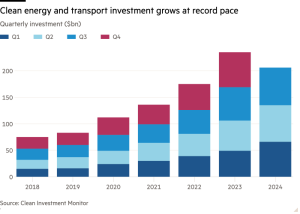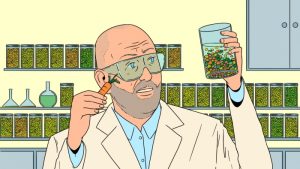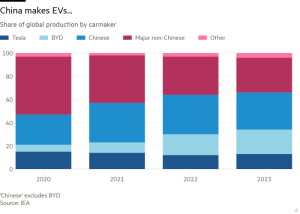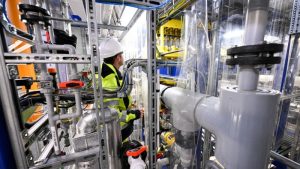Inside the ‘killer cell’ factory
Emily Whitehead was diagnosed with acute lymphoblastic leukaemia 14 years ago. The initial prognosis was hopeful, but her treatment did not go well. Emily, who was just five, reacted badly to the standard course of chemotherapy, which caused severe pains in her legs. About two years after her diagnosis, by which time most childhood sufferers are in the clear, the American schoolgirl suffered a relapse. The doctors recommended further intensive bouts of chemotherapy and a bone-marrow transplant, if she was strong enough.
Emily’s parents, Tom and Kari, agonised about the best course of action. They learnt that only 30 per cent of children who have a bone-marrow transplant live another five years. Kari scoured the internet to find out as much as she could about Emily’s condition. Though she trusted the doctors treating her daughter, Kari wanted a second opinion. She arranged to visit the Children’s Hospital of Philadelphia.
During Emily’s treatment, her parents had done their best to make the most of every moment with her. Emily loved exploring the countryside with her father and, on walks near their home in Phillipsburg, New Jersey, she spotted porcupines and tried to identify different bird songs. Tom continued to take Emily on these expeditions during breaks in her treatment, even though she sometimes struggled to walk.
Doctors suggested putting Emily on a clinical trial for CAR T-cell therapy, an experimental treatment that had just been approved for paediatric patients by the US Food and Drug Administration. CAR T-cell therapy had been developed by Professor Carl June, a pioneering scientist at the University of Pennsylvania Perelman School of Medicine who had lost his wife Cindy to cancer.
Sometimes described as the application of “living drugs”, CAR T-cell therapy involves extracting and genetically reprogramming white blood cells and infusing them back into the patient’s bloodstream to identify and kill cancer cells. T-cells, the body’s natural defence against cells infected with harmful pathogens, can be coated with chimeric antigen receptors (CARs) to target some blood cancers. June compared the treatment to the Trojan horse used by the Greeks to infiltrate an enemy fortress. Emily would be the first paediatric patient to receive it.
The therapy induced a raging fever in Emily, however, and she had to be put into a medically induced coma. At one point, a doctor told Tom and Kari to prepare for the worst: Emily had a one-in-a-thousand chance of making it through the night. But on her seventh birthday, as her family and nurses stood round her bed singing “Happy Birthday”, Emily showed signs of pulling through. A few days later, Kari would write in her journal: “No cancer cells! T-cells worked!!!!”
Emily had survived. Not only that, but her resilience had helped validate a promising new cancer treatment, which has further improved in the years since. By email, Emily told me that she truly appreciated all the behind-the-scenes work that went into developing the therapy that saved her life. “The work everyone does leads to many more families having the same outcome that we have, not just to survive, but also thrive in life!” she wrote.

Since being declared cancer-free in 2012, Emily has travelled the world and even told her story in person to President Barack Obama, who signed a slip to excuse her absence from school. Now 19, she is a student at the same university that helped cure her. With her parents, she has written a book about her experiences, Praying for Emily, and actively campaigned to publicise the potential of cell therapy, establishing a foundation in her name to fund research into childhood cancer treatments.
Over the summer, I spoke to the avuncular, white-coated June on a video call to his office in Pennsylvania. He told me that when he first started working on synthetic cells 30 years ago as an academic research project, he never imagined it would one day be possible to commercialise personalised therapies. But the rate of innovation in the field has been astonishing: there are now more than 1,000 clinical trials for cell therapies, according to the US government database ClinicalTrials.gov. If the first CAR T-cell therapies could be compared to Microsoft’s Windows 1.0, then we are now on to Windows 11. “I’m a kid with a candy box. There’s so many possibilities for making really smarter cells that are safer, more potent,” June says.
Researchers are already exploring the possibilities of using cell therapies to treat other forms of cancer, heart disease and even dementia. June says that three research hospitals in the US have had “quite striking results” injecting CAR T-cell therapies directly into the brain to treat glioblastoma, one of the most common, and aggressive, forms of brain cancer. He stresses that these are early-stage trials and it may take between five and 10 years for such treatments to win FDA approval.
Remission rates for patients with some forms of blood cancers treated with CAR T-cell therapy can exceed 80 per cent. But it is certainly not a miracle treatment for all forms of cancer. Biology is messy, the quality of cell therapies variable and the treatment does not work on all patients. And, despite its life-saving promise, cell therapy suffers one additional serious drawback: its cost. Emily’s cell therapy cost $473,000, putting it beyond the reach of all but the richest or best-insured. Thousands of patients who could be cured of various diseases are dying because of supply constraints. “Science is outstripping our ability to manufacture,” says June.
Snuggled next to the international airport, South San Francisco has a very different feel from its sister to the north. It used to be where steel works, meatpacking plants and industrial factories were hidden away from view. Nowadays, it is a flat, commercial district, teeming with glass-fronted office blocks. The area has also acquired a reputation as the birthplace of biotechnology. The trailblazing Genentech corporation and many imitators are headquartered here.
South San Francisco is home to Cellares, an ambitious biotech start-up that is responding to June’s manufacturing challenge to revolutionise the production of cell therapies. The company was co-founded in 2019 by Fabian Gerlinghaus, an impatient German aerospace engineer whose mission is to make cheaper treatments available to tens of thousands of patients as quickly as possible.
Cellares, which counts June as one of its advisers, was born from the proposition that cell therapy is evolving from a biological puzzle into an engineering conundrum. “The science is amazing. But there’s a manufacturing challenge because cell therapies are made to order for every patient individually,” says Gerlinghaus, as he rattles through a 30-page corporate slide deck projected on to a giant screen in Cellares’s chilled and windowless boardroom.
The company’s headquarters are dazzlingly white, and spotlessly clean, giving the building the feel of a semiconductor plant. Visitors usually have to don gowns and masks to enter the cleanroom where the company’s prototype Cell Shuttle is located. A large white and blue container that looks like a state of the art space capsule, the Cell Shuttle is a mini biological factory packed with laboratory instruments and digital equipment. It is, Gerlinghaus informs me, functionally equivalent to 100 different benchtop instruments in one machine.

The second part of the company’s name refers to Ares, the Greek god of war, a nod to its goal of producing “killer cells” to fight cancer. If it succeeds, Cellares could have a massive impact on the healthcare industry and help extend countless patients’ lives. In doing so, Gerlinghaus may also create a multibillion dollar company and earn a fortune.
To date, Cellares has raised $355mn to build smart manufacturing facilities in New Jersey, Europe and Japan. The ambition is for these plants, once operational, to turn out tens of thousands of treatments a year at significantly lower prices; Gerlinghaus estimates between $100,000 to $150,000 a pop, equivalent to the cost of a high-end Tesla. Given the maths, it is easy to see how Cellares has attracted the backing of some big venture capital firms.
Radiating intensity, the 37-year-old Gerlinghaus speaks with the precision of a German engineer and the enthusiasm of a Silicon Valley entrepreneur. His groomed black hair and crisp blue suits contrast with the default look of many techies in this part of the world: three-day stubble and a shapeless hoodie. In the past, he’d spend his spare time strumming the guitar or riding Harley-Davidsons, but he appears most animated now describing the finer details of the automation process needed to mass manufacture cell therapies. His obsession leaves no time for hobbies, he says.
Born in Bamberg, a “very wholesome” small town in Bavaria, Gerlinghaus excelled in high school and went on to study aerospace engineering at the prestigious Technical University of Munich. With this background, he might have been expected to go on to build aeroplanes or space rockets. But he realised that, unless you worked at Elon Musk’s SpaceX, you could spend a 30-year career in the German aerospace industry and only ever see one of your aeroplanes fly or satellites launch. “Development timelines are very, very long. And I like to make a lot of progress fast,” he says.
Instead, he hustled his way into a robotics research lab at Stanford University in the beating heart of Silicon Valley. There, he says, he spent as much time learning entrepreneurship as engineering. His networking skills paid off when he was offered a job by Paul Dabrowski, the founder and chief executive of the genome engineering start-up Synthego.
At that time, Synthego had only five employees in a garage. But it had big plans to profit from the life sciences revolution that was erupting in the early 2010s. Gerlinghaus stayed for five years, learning about biotech’s engineering challenges. One of his proudest achievements was helping to invent Synthego’s proprietary RNA synthesiser technology which the company uses to make Crispr-Cas9 genome engineering kits. At Synthego he also met Omar Kurdi, a fellow engineer with whom he would go on to found Cellares.
Born in Jordan, Kurdi had grown up dreaming of being a doctor. He started studying medicine at Stanford, but when it came to volunteering in a hospital, he became queasy while helping clean up a bloodied kid who had been injured in a baseball accident. “The doctor looked at me and said: ‘You know, I don’t need two patients. Go change your major if you can’t handle this,’” Kurdi tells me on a video call.
Following this blunt advice, he switched to engineering. One faculty member suggested that automating costly, manual scientific processes would be an alternative way for him to make a contribution to medicine. It would also end up helping humanity in a much bigger way.
At Synthego, Kurdi was responsible for operations, with Gerlinghaus in charge of research and development projects. But translating smart ideas into workable products was often fraught. “I would give [Gerlinghaus] a call at like midnight or so. He’d hop on his Harley-Davidson from San Francisco and drive down to meet me at Synthego in Redwood City. We would stay there until 5, 6am working on the problem. We’d go back home once we fixed it, shower up, get dressed and then come back into the office and work a normal day.”
The adversity might have strained others’ working relationship but it had the opposite effect on Kurdi and Gerlinghaus. “There’s a lot of trust and love and respect between Omar and me, which I think was critical for when we started a company together,” says Gerlinghaus.
The pair were excited about the emerging field of cell therapy. The life sciences industry could benefit from their applied engineering expertise, they thought. At Cellares they instituted a highly methodical product development process, identifying user needs, defining the necessary product requirements and designing prototypes in light of those requirements. They’d then test and retest the product to ensure it matched those original user needs. “At every level of abstraction, there’s testing back against what we originally set out to build. And what you build is very much informed by your customers,” says Gerlinghaus.

One customer is Bristol Myers Squibb, the New Jersey-based pharmaceutical company, which is developing a strong pipeline of cell therapies and has agreed a $380mn supply agreement with Cellares. The pharma giant has already developed its own manufacturing capacity in this field but is keen to increase the speed and scale at which it can produce therapies. Cellares, it says, offers access to the next-generation automation process.
“Cell therapy is one of the most promising and exciting technologies in medicine today,” says Lynelle Hoch, president of BSM’s Cell Therapy Organization. The one-time infusion of a patient’s re-engineered cells offers the prospect of a deep, durable, treatment-free remission. “This allows an individual not to live their daily life as a patient, but to live their life as a person,” she says.
Until recently, cell therapies were developed in a seven-stage process by skilled assistants in a laboratory. It often takes such lab workers between 50 and 100 manual steps to manufacture a single treatment, creating, as Gerlinghaus observes, 50 to 100 opportunities for human error. But the robotic Cell Shuttle automates all these processes, manufacturing 16 batches in parallel, or up to 2,800 therapies in a year. “The robot never gets tired. The robot works through the night without complaining. And the robot doesn’t need to go to the bathroom, right?” he says.
The first step in the production chain, performed in a clinic, is to extract some of the patient’s blood and enrich it, a process known as apheresis. This product is purified in the Cell Shuttle. The second step is to isolate a target population of the T-cells using antibody-covered magnetic beads, which stick to their surface and can be sorted.
The third step is the activation stage, when a reagent is added to the mixture signalling to the T-cells that they are under attack. That forces the T-cells, which Gerlinghaus describes as the “soldiers of our immune system”, to divide and multiply and prepare for “war”. The fourth and fifth steps, known as transfection and transduction, involve genetic manipulation of cells. A pre-prepared, genetically modified Crispr-Cas9 chemical cocktail is diffused into the cells and works its magic.
Once activated and genetically manipulated, the T-cells are placed in a bioreactor designed to optimise cell growth. The bioreactor keeps the liquid at 37C (body temperature) and adds oxygen and nutrients to create a “broth”. The final stage filters out any remaining impurities and replaces the liquid in which the cells are captured. This solution is then frozen, shipped back to the hospital, thawed and infused into the patient via a drip or a syringe.
Gerlinghaus calculates that the Cell Shuttles can reduce the production headcount and the amount of human labour needed to manufacture cell therapies by 90 per cent. Automation also cuts the facility space needed to produce the cell therapies by 90 per cent. “What that means is that with the same facility size and the same number of people, we can produce 10 times more cell therapies than our competitors,” he says.
Given that each cell therapy is uniquely designed for an individual patient, it is essential that the integrity of every treatment is assured. Cellares has developed its own automated quality control testing system it calls the Cell Q, which will be integrated into its manufacturing plants.
When Cellares was founded, Gerlinghaus says it received pushback from investors who did not believe it was possible for one company to do it all. They doubted it would be able to develop five of its own proprietary benchtop instruments and integrate them into a robotically automated cell shuttle that could develop therapies for 16 patients simultaneously. “They said: ‘You guys are positively nuts.’ And we said, ‘Yeah, that’s exactly what we’re going to do.’ And then we did it.” According to Gerlinghaus, the two started Cellares with $18mn, “based on Omar and my track record and a PowerPoint deck. That just doesn’t happen in Germany.”
The biotech field is littered with the corpses of start-ups that have promised to change the world but have run into the ground. Investor suspicion remains high following the collapse in 2018 of Theranos, the much-hyped but fraudulent blood-testing company. Cellares still faces huge challenges in proving that its automation process can manufacture cell therapies at consistently high enough quality at mass scale to make a return on its investment. Like any biotech company, it is also vulnerable to rivals inventing simpler, better and cheaper ways of developing treatments given the science is evolving at such a rapid pace. “You have to be able to see where the puck is going, not just where it is today,” says one industry veteran.
Whether the company succeeds depends on the extent to which Big Pharma backs cell therapies over alternative treatments and buys into Cellares’s vertical integration model. “You could end up with a company worth $100bn — or very little,” says one sceptical VC investor. Cellares still has a long and perilous way to go before it can emerge from the start-up industry’s infamous valley of death.
Later this year, Cellares plans to open the first of its smart factories, in Bridgewater, New Jersey. This 118,000 sq ft plant will contain 40 Cell Shuttles with the capacity to produce more than 40,000 batches a year. Depending on what kind of therapies it is producing and at what price, this single plant could generate between $4bn and $6bn of revenue a year. The company plans to open plants in Europe and Japan in 2026.
Its big hope is that cell therapies can be used to treat an increasing number of diseases. About 2,700 cell therapies are under development, according to the Cancer Research Institute. Although the CAR T-cell are effective against some forms of “liquid” cancers, such as leukaemia which affects the blood, they do not yet work so well against more complex “solid” tumours, such as breast and prostate cancer. Gerlinghaus is hopeful that will change.

Bristol Myers Squibb already has two FDA-approved cell therapies, targeting non-Hodgkin lymphoma and multiple myeloma, and several more in the pipeline. The company is particularly excited about recent breakthroughs in the field by Professor Georg Schett in Germany, who has been using cell therapies to combat autoimmune diseases, such as lupus, which can cause the body to attack its own tissue. “Most people thought that when you have an autoimmune disease, you have to suppress the immune system for ever. Now, we have a single shot that looks a lot like a cure,” Schett said earlier this year.
According to Hoch from Bristol Myers Squibb, Schett’s work opens up the possibility of “resetting” a patient’s immune system and developing cures that were not possible before. “It’s early data, but the data looks quite exciting and extraordinary,” she says. It is this intersection between science and medicine that makes the field look so promising to many researchers.
No matter how impressive the science or medicine, Gerlinghaus knows the engineering challenge has to be met to ensure that the greatest number of therapies can be produced for the greatest number of patients. When the founders first discussed the idea of Cellares, Kurdi argued they should tackle the hardest problem they could find because the rewards would be the greatest. Manufacturing cell therapies presented three enormous challenges: scalability, cost and quality. But the prize was also enormous. The management consultants McKinsey project that the patient population for CAR T-cell therapies could amount to two million people over the next five years. According to the World Health Organization, some 400,000 children develop cancer every year.
Kurdi jokes that he has difficulty remembering much of what happened during the company’s first four years given the round-the-clock workload. “Nothing can prepare you for starting a company. It is brutal,” Kurdi says. “It’s a lot of work but there’s also a lot of joy.”
John Thornhill is the FT’s innovation editor
Follow @FTMag to find out about our latest stories first and subscribe to our podcast Life and Art wherever you listen
#killer #cell #factory







